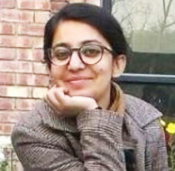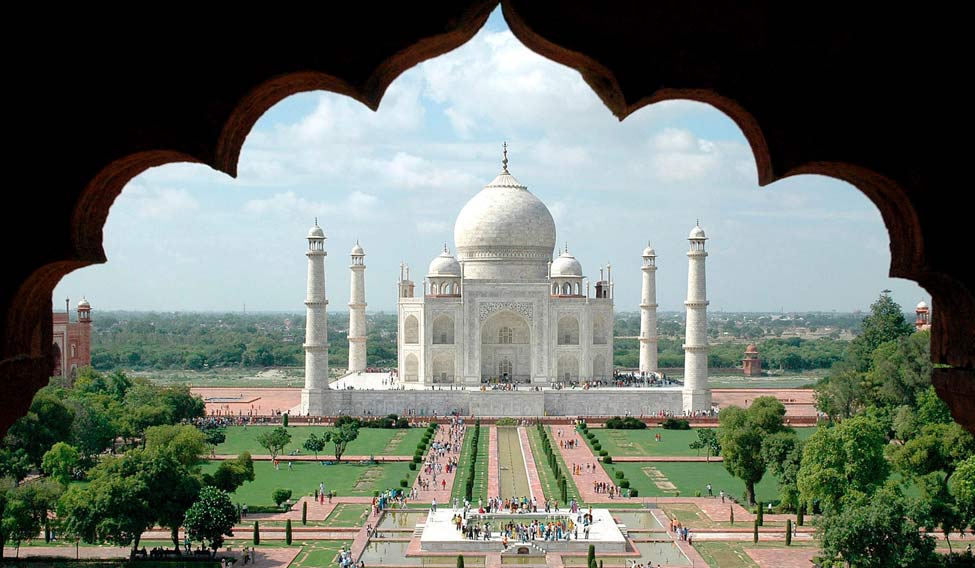When Shah Jahan built the Taj Mahal, he built it for love and glory. So that he could be remembered as a great Emperor, a loving husband and the builder of magnificent structures. However, he would certainly not have thought that he would be labelled as a traitor. But such is the bane of the time and it thus comes down to us to look into history and ascertain for ourselves whether the Mughals were 'outsiders' and 'traitors'.
 Afshan Majid
Afshan Majid
Though the founder of the Mughal empire was Babur, the legacy that was carried down through centuries of Mughal rule, was that of Akbar, an Emperor well known for his liberal and secular outlook.
Ardha Kathanak, an autobiography written in the 17th century by Banarasidas, a Jain merchant of Jaunpur gives us an insight into the times. He wrote: “I was sitting up a flight of stairs in my house when I heard the dreadful news,(of Akbar's death) which came as a sharp and sudden blow. It made me shake with violent, uncontrollable agitation. I reeled, and, losing my balance, fell down the stairs in a faint.” A commotion and insecurity followed the news until a letter arrived from Agra stating that Prince Salim (Jahangir) had been enthroned to rule from Agra, just like his father. In the words of Banarasidas, “This news came as a great relief and people heartily hailed the new King.”
This is a precious first-hand account of a common man which goes on to show the kind of influence, security and confidence the Mughal rulers inspired in the people.
Akbar is well known for his liberal policies. He was the ruler who truly established a 'composite culture': a beautiful amalgamation of the Hindu and the Muslim traditions. Apart from abolishing the coercive taxes on Hindus, his court was open to people from all religions and sects and the service in the Mughal court was based on merit rather than religion. He began the custom of celebrating the festival of rakhi in the court where people tied rakhis on the wrist of the Emperor because he was their protector. He used to wear a tika on his forehead and the
Brahmins proclaimed him to be an incarnation of Lord Ram and Krishna. It was during his reign that the Mahabharata, Atharva Veda, Singhasan Battisi, Panchtantra were translated into Persian and were read out to the Emperor, who listened to them with fervour, being unable to read them himself.
If we compare the Mughal empire of the 16th century to Europe of that period we will find that while in India Akbar was trying to abolish Sati, having open religious debates between Muslims, Hindus, Jains and Christians in his 'ibadatkhana' (house of prayer); during the same time in Europe people were being persecuted in the name of religious Inquisition.
Akbar absorbed the Indian culture in his very person and it is from his 'composite and tolerant' India that the Ganga-Jamuni tehzeeb flows to this day. His heir's inherited not just the liberal attitude but also the idea of belonging to India from him. Jahangir assured the people just after his accession, that he will follow all the policies of his father.
Shah Jahan, whose iconic construction: the Taj Mahal manages to remain in news for one reason or the other, also had a clear idea that India and its society and culture was distinct from the rest of the world.
Lahori, a chronicler of Shah Jahan's times wrote about him: “ If per chance, mention is made in His Majesty's presence of the cruelty of the Emperors of Constantinople, Iran and Uzbeks, and of their ferocity in awarding punishments, His Majesty gets so perturbed that the signs of sadness are apparent from his illustrious forehead.”
These lines apart from indicating the concept of justice also go on to show that Shah Jahan looked at himself and the India that he ruled, as distinct from the rest of the 'Muslim' world. His own son and heir apparent, Dara Shikoh was a scholar of Sanskrit, studied the Vedantic philosophy in detail, translated the Upanishads into Persian and was of the firm belief that the Upanishads are the 'hidden books' which the Quran spoke of. He wrote a work called the Majma-ul-Bahrain (Meeting of the Two Oceans) in which he concluded that the difference between Islam and Hinduism was merely verbal. He sought the company of Brahmans, Jogis and Sanyasis and used to wear a ring with the word Prabhu inscribed on it.
Dara Shikoh who was chosen by Shah Jahan as a future Emperor of India would have been a second Akbar, or maybe even greater had he not lost to Aurangzeb in the war of succession.
The Mughals were Indian not just in their beliefs and outlook but also by their genes. It comes almost as a hilarious revelation that in the process of building good relationships with the Rajputs, the Mughals had mixed their bloodlines with them. So Shah Jahan, the great builder of the Taj, was not Indian just in his outlook but, half a Rajput himself because his mother and grandmother were both Rajputs. And rulers with such beliefs and genes can hardly be labelled as 'outsiders' let alone 'traitors'.
Afshan Majid is a visiting faculty of History at Symbiosis School for Liberal Arts, Pune. Views expressed are personal.




